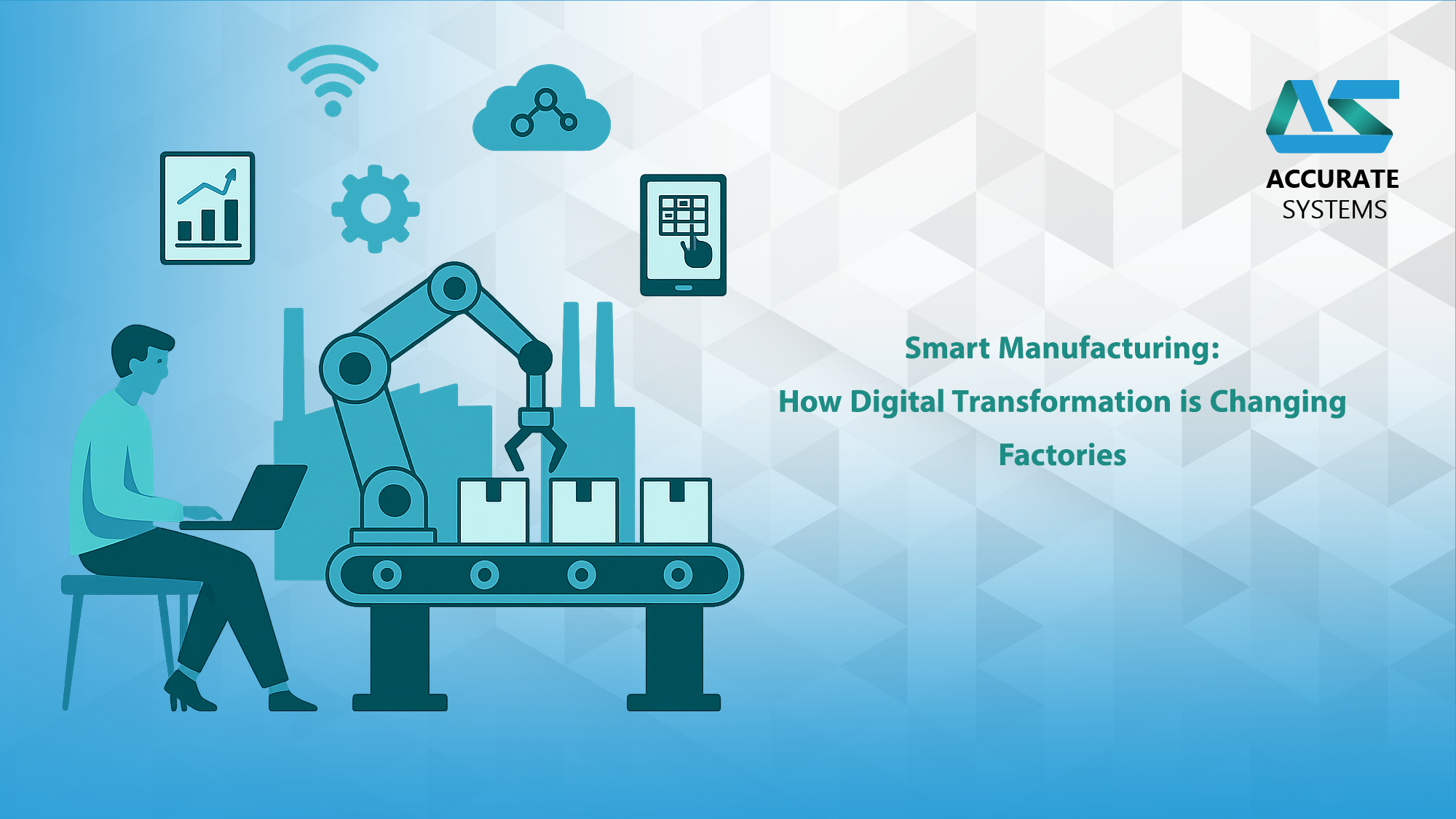What is Smart Manufacturing?
Smart manufacturing is a digitally enabled approach to production that integrates advanced technologies—such as the Internet of Things (IoT), Artificial Intelligence (AI), big data analytics, and robotics—into the manufacturing environment. The goal is to create responsive, efficient, and data-driven factories that can adapt quickly to changes, reduce costs, and improve product quality.
Smart manufacturing is the foundation of Industry 4.0. It connects machines, systems, and humans in real time, enabling faster decision-making and continuous improvement across production lines. Unlike traditional manufacturing models, which rely heavily on manual processes and isolated systems, smart factories are built on interconnectivity, automation, and data intelligence.
Key Components of a Smart Factory
A smart factory relies on a combination of core technologies and infrastructure components that work together to create an intelligent manufacturing environment:
1. Industrial Internet of Things (IIoT)
Connected devices and sensors collect data from machines, materials, and operations. This data is used for real-time monitoring, diagnostics, and control.
2. Automation and Robotics
Advanced automation, including collaborative robots (cobots), performs repetitive tasks, improves precision, and enhances productivity.
3. Artificial Intelligence and Machine Learning
AI algorithms analyze data from the factory floor to predict maintenance needs, identify inefficiencies, and improve process optimization.
4. Digital Twins
Digital twins simulate physical assets or processes. They help engineers model production systems, test scenarios, and optimize operations without disrupting real-world workflows.
5. Cloud and Edge Computing
Cloud computing provides scalable storage and processing, while edge computing brings real-time analytics closer to the source, minimizing latency and improving response times.
6. Cybersecurity Infrastructure
Smart factories are connected, which increases the risk of cyberattacks. Secure networks, encrypted communications, and identity management systems are critical for protection.
7. Advanced Human-Machine Interfaces (HMI)
Touchscreens, wearable devices, and voice-enabled systems enable operators to interact with machines more efficiently.
How IoT and AI Optimize Smart Manufacturing
The Role of IoT in Manufacturing
The IoT plays a crucial role in smart manufacturing by enabling machines and equipment to communicate with each other and with centralized systems. Sensors embedded in production equipment monitor temperature, vibration, pressure, and performance, providing real-time alerts and actionable insights.
Benefits of IoT in Manufacturing:
- Real-time machine monitoring
- Condition-based and predictive maintenance
- Inventory tracking and asset management
- Energy usage optimization
The Role of AI in Manufacturing
AI brings intelligence to manufacturing processes by learning from historical and live data. AI-powered systems can:
- Forecast demand and adjust production schedules
- Detect defects in real-time during assembly
- Recommend maintenance before breakdowns
- Optimize supply chain logistics and reduce lead times
Together, IoT and AI reduce downtime, boost efficiency, and support better decision-making throughout the factory.
Benefits of Smart Manufacturing for Businesses
Smart manufacturing brings measurable advantages to manufacturers of all sizes:
1. Increased Operational Efficiency
Real-time analytics and automation eliminate waste and improve cycle times.
2. Higher Product Quality
AI-driven quality control detects defects early, minimizing returns and rework.
3. Reduced Costs
Predictive maintenance and energy optimization reduce operating expenses.
4. Faster Time-to-Market
Flexible manufacturing systems adapt quickly to new designs or customer needs.
5. Improved Safety and Compliance
Smart systems can identify unsafe conditions and automatically enforce safety protocols.
6. Scalability and Agility
Digital systems allow manufacturers to scale operations and respond to market fluctuations efficiently.
Challenges and Solutions in Smart Manufacturing
1. High Initial Investment
Digital transformation requires investment in hardware, software, and training. Solution: Start with small, high-impact pilot projects that offer measurable ROI.
2. Integration with Legacy Systems
Older machines and systems may not support modern connectivity standards. Solution: Use industrial IoT gateways, middleware, and APIs to connect old and new infrastructure.
3. Cybersecurity Threats
More connectivity means increased exposure to cyber risks. Solution: Implement strong network security protocols, real-time monitoring, and regular audits.
4. Skills Gap and Change Management
Employees may lack digital skills or resist change. Solution: Invest in employee training, digital upskilling, and a strong change management strategy.
5. Data Overload
Collecting vast data is easy; analyzing and acting on it is harder. Solution: Deploy AI-powered analytics tools that sort, prioritize, and visualize key data points.
Conclusion
Smart manufacturing is at the heart of the digital industrial revolution. By combining advanced technologies like IoT, AI, robotics, and cloud computing, factories are becoming more intelligent, flexible, and efficient than ever before.
While transitioning to smart manufacturing presents some challenges, the long-term benefits—improved efficiency, reduced costs, enhanced quality, and better customer service—make it a strategic imperative for modern manufacturers.
Embracing smart manufacturing isn’t just about upgrading machines—it’s about transforming the way your business competes in the global digital economy.
#SmartManufacturing #Industry40 #IoT #AI #DigitalTransformation #ManufacturingInnovation #Automation #FutureOfFactories


